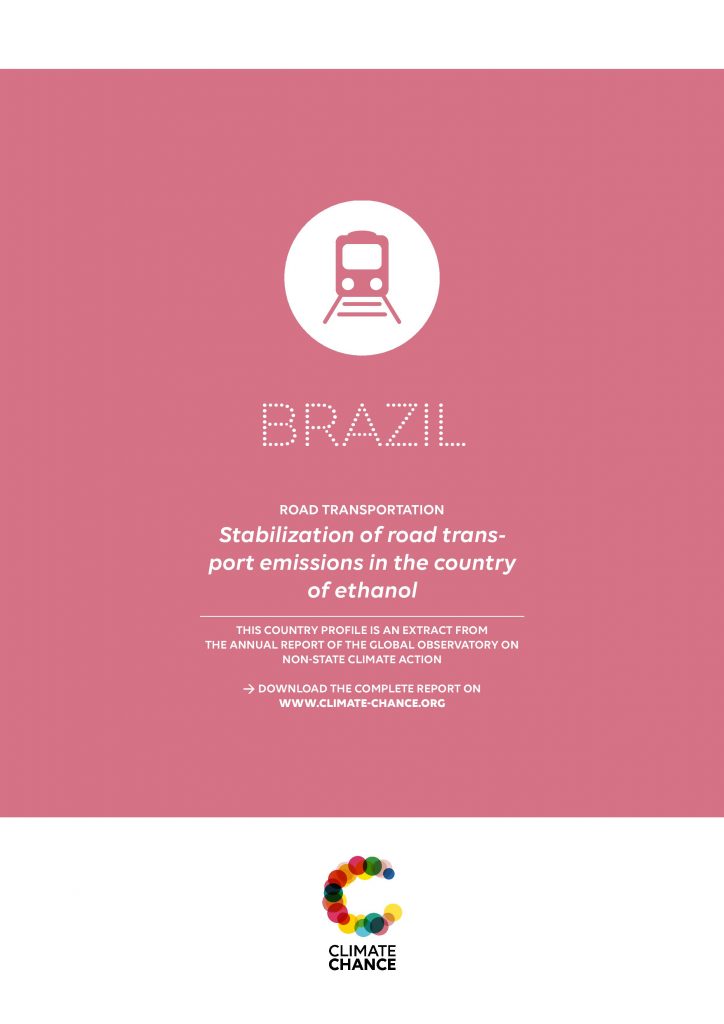Brazil • Stabilization of road transport emissions in the country of ethanol
This chapter analyses the factors explaining the evolution of emissions in the transport sector and the various actions in progress.

Introduction
Brazil’s attenuation target is a 37% reduction in national GHG emissions by 2025 and 43% by 2030 compared to the 2005 baseline. While the country’s main efforts are focused on increasing the share of renewable energies in the energy matrix, achieving zero deforestation and recovering 12 million hectares of forests in the Amazon, the challenge is also important in the transport sector: diesel and petrol account for 75% of the energy consumption of the sector and forecasts predict
that transport-related GHG emissions will be 45% of the national total in 2025 (Waycarbon, 2018). This chapter analyses the factors explaining the evolution of emissions in the transport sector and the various actions in progress.
Contents
1 • Recent stabilisation of emissions
2 • Urban mobility undergoing transformation
The crisis of public transport
Urban mobility plans, instruments of low-carbon mobility
3 • Fuels: Between successes and challenges
Ethanol fuel: the Brazilian model
Dependence on the road freight and on diesel
Emergence of biodiesel
Conclusion
The recent stabilisation of transport sector emissions at the 2012 level is more the result of the current economic crisis in Brazil than of pro-climate actions. It will be interesting to observe the evolution of the sector’s GHG emissions as the country recovers economic growth. Many initiatives are under way to decarbonise transport, at the federal level in terms of biofuel, but also at the municipal and civil society level; will these actions reverse the emissions curve?



